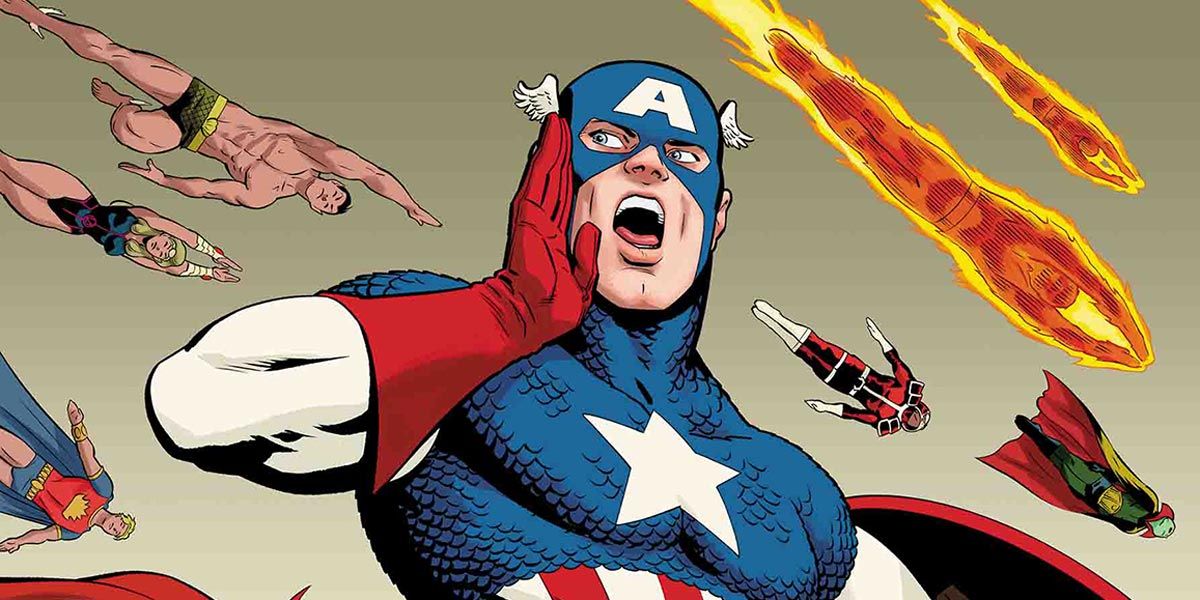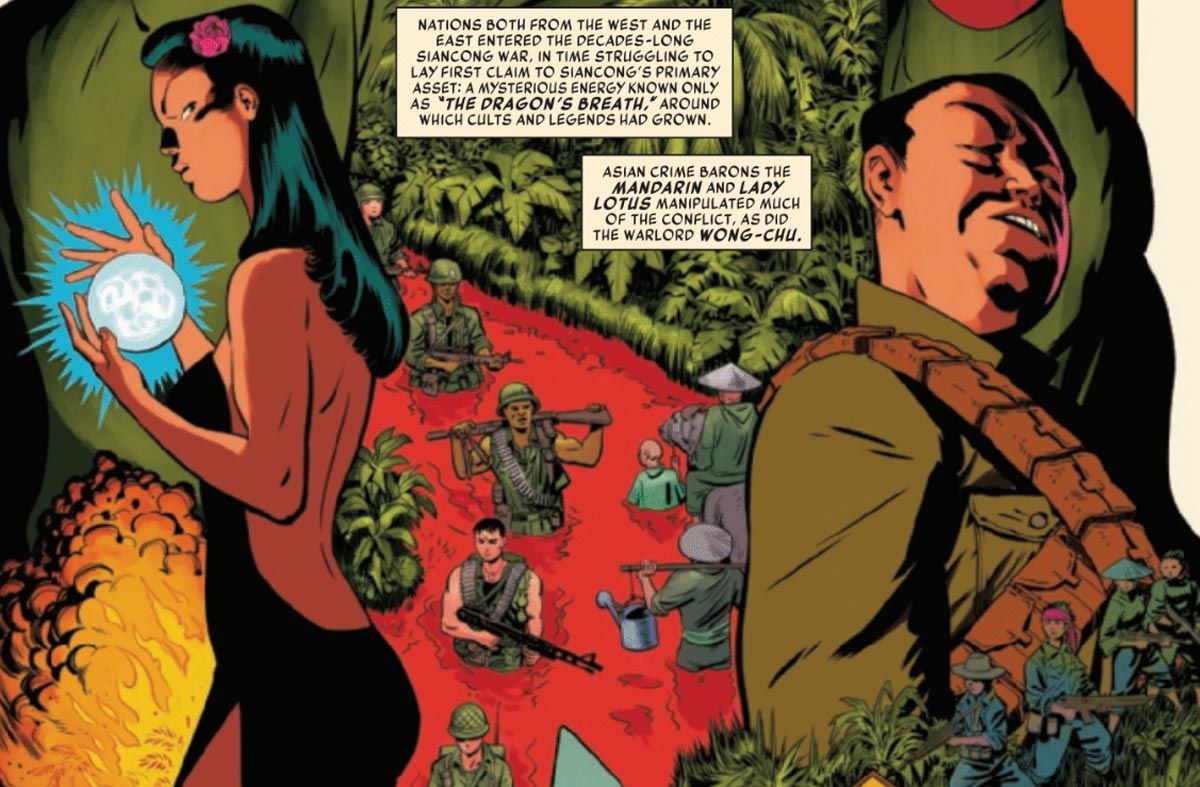WARNING: The following contains spoilers for History of the Marvel Universe #2, by Mark Waid, Javier Rodriguez, Alvaro Lopez and VC's Joe Caramagna, on sale now.
Publishing superhero comics across decades starring characters that, by and large, don't age requires companies like Marvel and DC to periodically make adjustments to continuity, usually referred to as a floating or sliding timeline. For example, by DC's timescale, Batman has generally been presented as having been active for about 10 years. Similarly, it's been established the Avengers thawed Captain America from ice a decade ago and not in 1963. That works well enough, at least until a hero's origin is tied to a real-world event anchored in time. Marvel has addressed that dilemma with its most famous Vietnam War veteran, Frank Castle, by moving his tours of duty decades into the future, to the Gulf War.
But History of the Marvel Universe #2 has a more novel solution for that: simply make another, fictional war.
Readers knew that Mark Waid and Javier Rodriguez's magical mystery tour of the Marvel Universe would get a little sticky as it entered the 20th century with its second issue. Characters like Captain America, Bucky Barnes, Nick Fury and Namor can remain tethered to World War II yet remain timeless through the Super-Soldier Serum, suspended animation, the Infinity Formula and Atlantean physiology, but the real trick comes as the narrative enters what, in real-world terms, is the 1960s. Where the Vietnam War should be is instead the the Sin-Cong Conflict (erroneously spelled "Siancong" in the story).
On a page dominated by depictions of Iron Man villains Mandarin and Wong-Chu, and Invaders foe Lady Lotus, we're introduced -- or, rather, re-introduced to the Siancong [sic] War, a decades-long struggle to lay claim to the primary asset of the Southeast Asian country: "a mysterious energy known as 'The Dragon's Breath,' around which cults and legends had grown." Although the image of American soldiers wading waist-deep in a river certainly evokes the Vietnam War, it's instead Sin-Cong.
It's with a subsequent narration box that we understand the significance of this change: "It was in Siancong [sic] that Marines James Rhodes and Frank Castle, Army Air Force pilot Ben Grimm, military consultant Reed Richards and many others who would later become key figures in history first fought in service of their country."
The fictional nation of Sin-Cong is obscure, but it isn't new to the Marvel Universe. Introduced in 1965, in Avengers #5, it was obviously intended to be a stand-in for Vietnam from the start. It's appeared less than a dozen times since then, perhaps most recently in All-New Inhumans, where many Nuhumans manifested because of the Terrigen Cloud, and in Doctor Strange.
However, the Sin-Cong Conflict as a stand-in for the Vietnam War in the backstories of prominent characters is new. But, as the issue's appendix clarifies, the Vietnam War still occurred in the Marvel Universe; it's just, for the sake of the floating timeline, it may no longer play a role in the histories of characters like Frank Castle and James Rhodes: "To accommodate for the passage of time, some Marvel Universe references of character involvement in the Vietnam War have been retroactively refitted to be the Sin-Cong Conflict; the Vietnam War remains a world event that took place from 1955-1977 in the Marvel Universe as well as it did in reality. Therefore, due to the retroactive continuity, some in-story presentations of Marvel characters in the Vietnam War should be considered a depiction of the Sin-Cong Conflict."
While the Vietnam War is obviously anchored in a 20-year period, the fictional Sin-Con Conflict can float, just like the thawing of Captain America. Although it moves the Marvel Universe one step further away from "the world outside your window," the change theoretically means writers won't need to struggle to find the next real-world war to connect the origins of certain characters. But how long this "fix" will last is another matter entirely.


